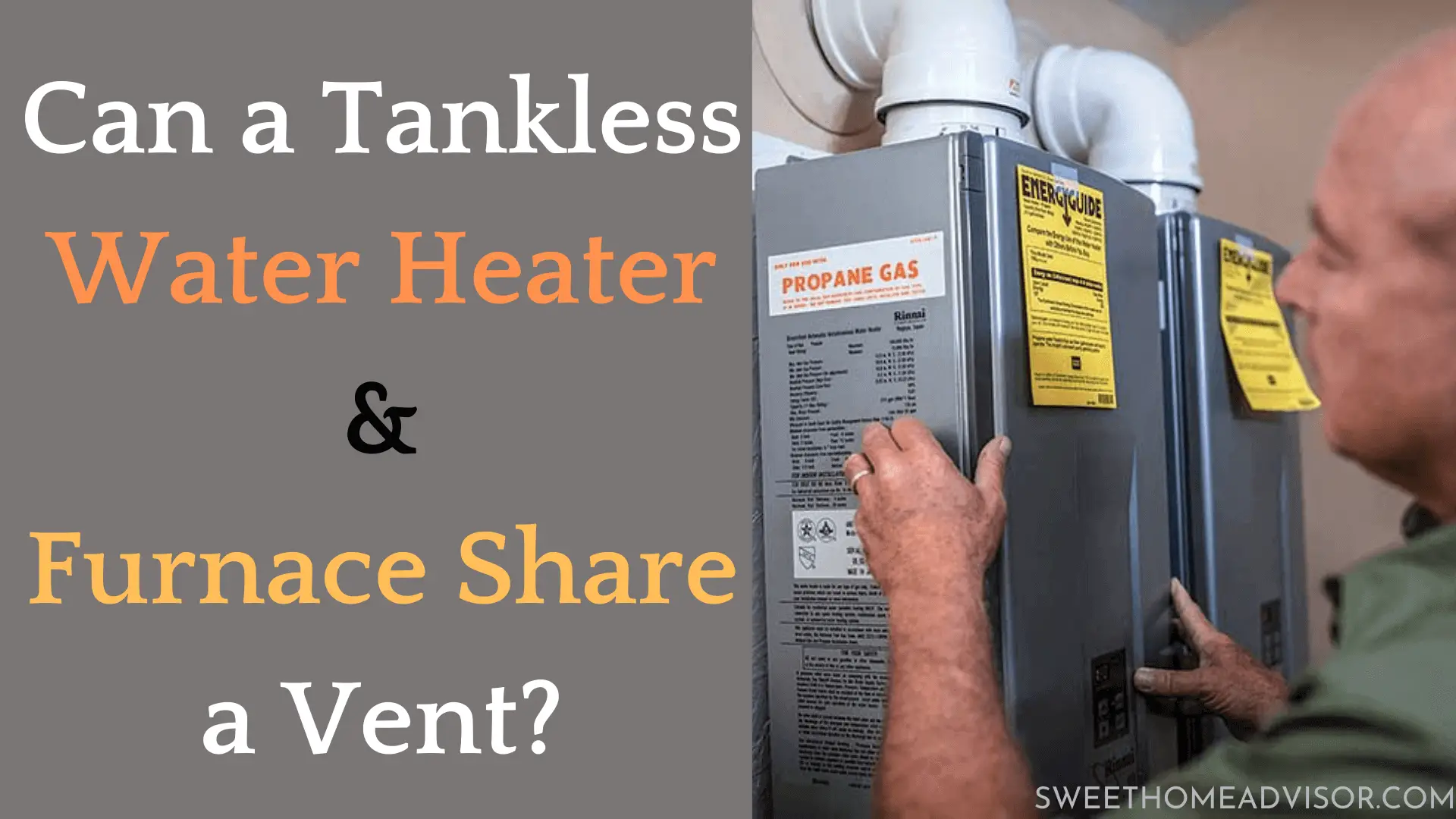To understand the whole process of installing a vent with a water heater and a furnace. In this post, we will know about Can a Tankless Water Heater and Furnace Share a Vent?
We need to understand a few points:
- How they work.
- What are their complexities
- And can we share a vent with it or not.
So, let’s begin to understand it.
What is a Tankless Water Heater?
Tankless water heaters are a more cost-effective and efficient option than traditional storage tank models. By providing only hot water when it’s needed, these types of heating systems can save you money on your electric bill and protect natural resources in the environment!
A tankless unit doesn’t store excess electricity by running bulky equipment all day long- making them more eco-friendly than storage tanks.
How does it work?
Tankless water heaters are great for heating large amounts of hot water quickly. They’re typically more efficient than standard tank-style models.
They have the advantage that you don’t have to wait around while your unit preheats or goes through its cycle before being able to use all those pipes again!
A tankless water heater provides hot water at a rate of 2 to 5 gallons of water, which is 7.6 to 15.2 liters of water per minute.
What is a furnace?
It’s hard enough to think of what you will be doing during the holidays when it gets cold. The last thing on your brain is how warm or cool someone else has made sure to keep your home for Christmas!
But if there’s no heat, all those plans go up in smoke (literally). That’s when a furnace comes in hand.
Furnaces represent the most popular choice for home heating due to their high efficiency, low operating noise, and long lifespans.
They also have great flexibility – there’s usually a furnace that fits any size or type of house!
How does it work?
Furnace systems heat homes by using hot air from an external source like fireplaces.
This warm air enters through registers in walls/ceilings to meet cold CFL lightbulbs, which help distribute warmth throughout every room.
Now that we know how tankless water heaters and furnaces work. And we also know that we need a vent for both devices. So, let’s discuss whether we can share a vent with the tankless water heater and a furnace.
Can a Tankless Water Heater and Furnace Share a Vent?
If we share a short yet not so careful response, then, yes, it is possible to install a ventless water heater.
Most homes have an exhaust pipe that connects both the furnace and heaters into one system. So, it’s not necessary for you to worry about installing something new when adding on more space or even changing which unit works best with your home needs!
Is it safe to share a vent with a water heater and a furnace?
Venting your water heater and furnace at the same time can pose a fire hazard in the home. Consistent venting will allow for better heat distribution. But if done incorrectly, it could create severe problems with heat escaping through unvented pipes.
Installing a vent for both a water heater and a furnace requires creating as much space as possible. If it is not finished correctly, it can pose a big problem.
If a tankless water heater and furnace share vent are no problem for your home, check out the pros and cons of a tankless water heater.
Pros and Cons:
- It’s a good idea to vent your water heater and furnace together. This practice can help reduce indoor air pollution, which is especially important if you have children or pets in the house!
- But the thing we must keep in mind is that this type of venting can only reduce indoor air pollution. On the opposite of that, air pollution increases outside in the environment.
- The vent for tankless water heaters is usually much smaller than the furnace vent. This indicates that the tankless water heater will be working very hard to push out hot air.
This also means it’s working very hard to draw in makeup air.
This is an brilliant way to save space, but there are potential problems with the setup.
In homes with both a tankless water heater and furnace sharing one vent, the most common complaints seen by service technicians are:
- Clogged furnaces,
- No hot water.
Conclusion
The shared vent for a gas furnace and water heater can cause efficiency at 80%. This means that the exhaust gases from these devices will enter your home if there’s not enough room to move them outside.
This could potentially result in back drafting. Replacing the pipe with one of the smaller dimensions ensures safety from harmful air pollution within homes. And it will still provide adequate ventilation during the summer months.

